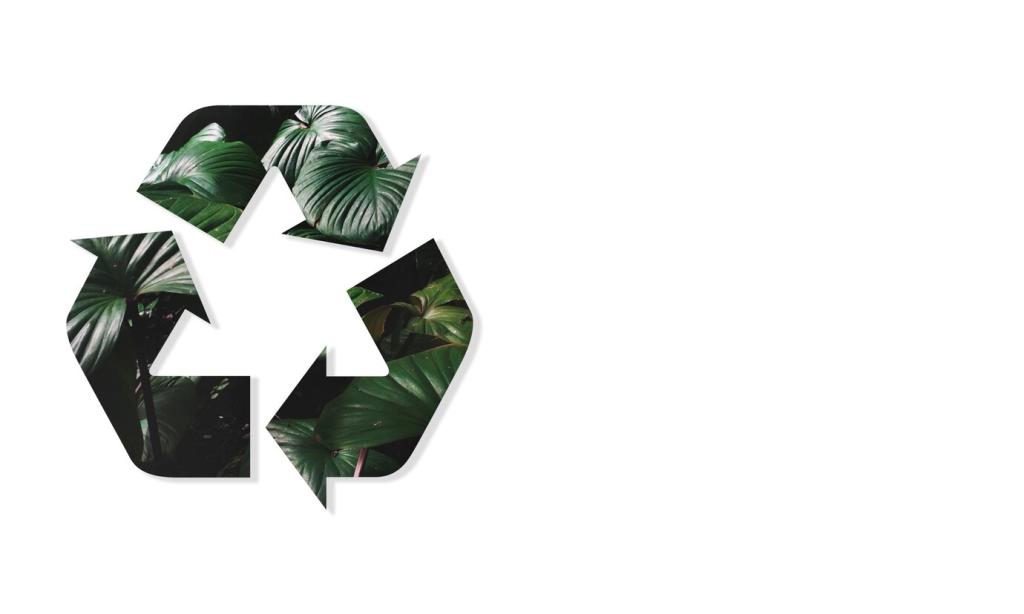
Innovative Trends in Sustainable Packaging Design
The landscape of packaging is undergoing a transformative shift, driven by an urgent need for sustainability, consumer demand for eco-friendly solutions, and advancements in material science. Innovative trends in sustainable packaging design are redefining how brands approach materials, manufacturing methods, and lifecycle management. Companies are now focused on not just protecting products, but also reducing environmental impact, enhancing recyclability, and contributing to a circular economy. In this exploration, we delve into eight dominant trends that are shaping the future of sustainable packaging, highlighting the creative thinking and technological advancements behind each movement.
Biodegradable and Compostable Materials
Plant-Based Plastics
Plant-based plastics, or bioplastics, are increasingly replacing conventional petroleum-based plastics. These materials are sourced from renewable resources like corn starch, sugarcane, or cellulose. Unlike traditional plastics, many bioplastics are engineered to decompose under industrial composting conditions, significantly lowering their end-of-life environmental footprint. Companies adopting plant-based plastics are not only reducing dependence on fossil fuels but also appealing to environmentally conscious consumers who prefer greener choices for everyday products.
Mushroom Packaging
Mushroom-based packaging is an innovative solution using mycelium, the root structure of fungi, to bind agricultural waste into custom shapes. This natural process results in packaging that is both compostable and biodegradable. Mushroom packaging degrades in a matter of weeks when composted, and its production requires minimal energy input. Brands across industries, particularly those shipping fragile goods, are adopting mushroom packaging as a sustainable, lightweight alternative to traditional foams and molded plastics.
Seaweed-Derived Packaging
Harnessing the abundant and fast-growing nature of seaweed, designers have developed packaging materials that are edible, compostable, and entirely free from toxins. Seaweed-based films and wrappers dissolve quickly in water or soil, reducing waste accumulation and marine pollution. This trend not only introduces a low-impact solution to single-use packaging but also utilizes a resource that grows rapidly without the need for arable land or fresh water, thus minimizing its ecological footprint.

Reducing Material Usage
By engineering packages that use as little material as possible while still protecting the product, companies significantly cut raw material consumption and waste generation. This reduction is achieved through advanced design techniques, such as optimizing the structural integrity or removing unnecessary layers. Not only does this support sustainability, but it also brings cost savings and logistical efficiency, making products more attractive to both consumers and retailers looking for eco-friendly options.
Frustration-Free Packaging
Frustration-free packaging eliminates excessive layers and unnecessary elements, focusing on user experience and environmental responsibility. Brands are simplifying their package designs so they can be opened easily without the use of additional tools, adhesives, or plastic films. These changes significantly improve recyclability, reduce packaging waste, and minimize energy consumption during both production and disposal. The approach also contributes to lower shipping weights and volumes, further reducing their carbon footprint.
Flat-Pack and Collapsible Solutions
Flat-pack and collapsible packaging designs are gaining traction, especially in e-commerce and furniture markets. These solutions are engineered to maximize space utilization during shipping and storage, reducing energy use and transportation emissions. After serving their primary purpose, flat-pack designs are often easier to recycle and have a lower risk of contributing to landfill overflow. The lightweight and modular nature of these solutions supports both environmental initiatives and customer convenience, aligning closely with modern sustainability goals.
Previous
Next
Circular Economy Initiatives
Packaging take-back programs encourage consumers to return empty packaging to collection points or mail them back for reuse or recycling. Through these initiatives, companies assume responsibility for the end-of-life management of their products, diverting waste from landfills and ensuring materials stay in circulation. Not only do take-back programs reduce environmental impact, but they also foster brand loyalty by engaging consumers directly in sustainability efforts.
Smart and Active Packaging Innovation
Time-Temperature Indicators
Time-temperature indicators are smart labels that monitor and visually display the freshness of perishable goods. By integrating these indicators into packaging, brands empower consumers and retailers to make informed decisions regarding product safety, minimizing the likelihood of premature disposal or spoiled goods. Reducing unnecessary waste by ensuring only expired items are discarded contributes significantly to environmental sustainability, especially in the food industry.

Innovative Printing and Labeling Solutions
Water-Based and Bio-Based Inks
Conventional printing inks often contain volatile organic compounds and heavy metals, posing challenges for both recyclability and safety. The shift towards water-based and bio-based inks offers an eco-friendly alternative, as these formulations are derived from renewable raw materials and lack harmful ingredients. By minimizing toxic pollutants, brands can ensure their packaging is safer for both workers and end-users, and more compatible with recycling processes.
Direct-to-Pack Printing
Direct-to-pack printing eliminates the need for separate labels or shrink wraps by applying graphics directly onto the package surface. This not only reduces additional material usage but also simplifies the recycling stream since labels often comprise different materials from the main package. Innovations in digital printing technologies now enable high-quality, full-color images without compromising the recyclability of packaging, enhancing both sustainability and visual appeal.
Removable Adhesives and Labels
Some packaging designs now feature removable adhesives and labels, which can be detached from the primary material without leaving residue or compromising recyclability. These advanced adhesives facilitate efficient separation during recycling, ensuring that the package material remains pure and valuable. Removable labeling also opens up creative opportunities for reuse, transforming packages into containers or objects with an extended life beyond their initial use.
Functional and Multi-Purpose Packaging
Reusable Containers and Totes
Reusable containers are fast becoming a staple for products ranging from food and beverages to beauty and household goods. Designed for durability and extended life, these packages can be refilled or repurposed long after the original contents are consumed. Retailers offering incentives for returns or refills are helping to close the loop, reducing both resource extraction and waste generation.
Secondary Use Packaging
Secondary use, or “double life” packaging, is engineered to continue serving a purpose after its initial function is fulfilled. Examples include boxes that convert into storage containers, planters, or children’s toys. By designing packaging with built-in secondary uses, brands incentivize consumers to retain and creatively repurpose materials, thereby prolonging their useful lifespan and lowering the overall environmental burden.
Modular Packaging Systems
Modular packaging systems are developed to be customizable and adaptable to various product types or sizes, streamlining inventory and reducing waste. This flexibility allows manufacturers to produce fewer unique types of packaging, optimizing material use and production efficiency. Consumers benefit as well, with packaging solutions that adjust to their changing needs, fostering a culture of reuse and thoughtful consumption.
Localized and Renewable Sourcing
Using fiberboard sourced from well-managed local forests reduces transit distances, energy use, and overall carbon footprint. Regional sourcing supports sustainable forestry practices and contributes to local economies while ensuring a steady supply of renewable packaging materials. Brands that highlight their commitment to local sourcing resonate strongly with consumers seeking authentic, community-centered values.
Agricultural byproducts like rice husks, wheat straw, and bagasse are now being upcycled into packaging materials. These fibers, which would otherwise be burned or discarded, are transformed into biodegradable, compostable alternatives to traditional pulp and plastics. The approach not only diverts waste from landfills but also provides farmers with additional streams of revenue, reinforcing the social and environmental pillars of sustainability.
A growing number of packaging producers are investing in renewable energy to power their manufacturing facilities. By transitioning to solar, wind, or hydropower, these companies dramatically lower greenhouse gas emissions linked to package production. This shift underlines a holistic view of sustainability, where not just the materials but also the means of production are critically assessed for their environmental impact.

Previous
Next
